
by HOS | Sep 26, 2025 | Blended Whisky, Specials, Whisky
There’s something magical about a drink that doesn’t just sit in your glass, but starts a conversation, a whisky that sparks curiosity, nostalgia, and reflection. For whisky enthusiasts and curious sippers alike, Filey Bay Yorkshire Day 2020 is that rare gem. Limited in production, rich in flavour, and infused with the spirit of Yorkshire, it’s a drink that transforms an ordinary evening into an extraordinary experience.
A Whisky That Invites Reflection
Pour a glass of Filey Bay Yorkshire Day 2020 and notice how it seems to demand attention. Its deep amber hue glows like a Yorkshire sunset, hinting at the care and time invested in its creation. With only 1,500 bottles released, this limited edition is a collector’s dream and an invitation to slow down and savour every moment.
It’s the kind of whisky that encourages thoughtful conversations, the ones that linger long after the glass is empty. As you take that first sip, layers of flavour unfold: sweet vanilla, rich toffee, dark chocolate, and ripe red fruits, complemented by subtle spice and a warming, long finish. Each sip is a journey, evoking the breezy cliffs of Filey Bay and the rugged charm of Yorkshire itself.
Types of Conversations That Flow
- The Nostalgic Story Swap
A glass of this whisky naturally brings out memories, childhood summers by the coast, old friends, and first adventures. Its comforting sweetness and complex layers make it the perfect companion for reminiscing, sharing stories that feel timeless yet vivid. - The Philosophical Debate
That balance of rich flavours and warming spice sets the stage for big questions: What defines happiness? How do we measure success? Over this rare drink, even the most abstract thoughts seem grounded, turning deep musings into shared moments of insight. - The Curious Explorer Chat
Every bottle tells a story. Where did the barrels come from? How did the sherry and bourbon casks shape the flavour? Conversations about craftsmanship, heritage, and local tradition come alive, fueled by the whisky’s rarity and the subtlety of its STR-cask finish. - The Gentle Comfort Discussion
Sometimes, it’s not about profound ideas but quiet, heartfelt exchanges. The warmth of this whisky, its honeyed notes, hints of plum, and soft vanilla- encourages reflection, empathy, and meaningful connections. It’s the perfect backdrop for sharing dreams, fears, or simple gratitude.
Why Filey Bay Yorkshire Day 2020 Is Unique
What makes this whisky special isn’t just its ability to spark conversation, it’s the rarity and craftsmanship behind it. Produced at the Spirit of Yorkshire Distillery in Hunmanby, near Filey Bay, it’s Yorkshire’s first single malt whisky distillery. Each bottle represents meticulous care: locally sourced barley, careful fermentation, and a marriage of PX sherry and ex-bourbon casks. The STR (Shaved, Toasted, Re-charred) cask finish adds depth, complexity, and a subtle smoky layer that sets it apart from ordinary releases.
The limited production of 1,500 bottles makes it an exclusive experience. Owning or sharing a bottle is not just about taste, it’s about being part of a rare moment, a story that’s as much about tradition and place as it is about flavour.
The Beauty of Savouring It
Holding a glass of Filey Bay Yorkshire Day 2020 is like holding a piece of Yorkshire itself. The deep amber colour, the aromatic bouquet of dark chocolate, plums, and vanilla, and the intricate balance of sweetness, spice, and warmth make it a multisensory experience. Each sip reveals new layers, encouraging mindfulness and presence, qualities that naturally lead to thoughtful, engaging conversations.
Whether you’re a whisky connoisseur or someone who enjoys the occasional tipple, this release reminds us that a drink can be more than liquid in a glass. It can be a catalyst for connection, reflection, and discovery.

by HOS | Sep 18, 2025 | Highland Whisky, Specials, Whisky
Whisky can feel like a world of its own, with a long history, unique flavors, and traditions that sometimes seem overwhelming to newcomers. When you’re stepping into this world for the first time, every sip matters, and so does the way you approach it. Among the many distilleries that carry Scotland’s heritage forward, Benromach holds a special place. If you’re planning to try it for the first time, there are a few simple but valuable tips that can make the experience much more rewarding.
You want to find out how to taste, enjoy, and appreciate your dram like a seasoned enthusiast, without getting lost in the jargon or pressure of knowing “everything” about whisky culture?
Let’s do that.
.
1. Prepare Your Palate
Before pouring a glass, think about what you’ve recently eaten or drunk. Strong flavors like spicy food, coffee, or overly sweet desserts can overpower subtle whisky notes. If possible, approach your first sip with a neutral palate. A glass of water beforehand helps reset your taste buds so you can fully experience the whisky’s character.
2. Choose the Right Glassware
The glass you use can significantly influence your experience. A tulip-shaped glass, such as a Glencairn or Copita, is ideal because it concentrates the aromas. Standard tumblers may look stylish, but they don’t allow you to capture the intricate scents that make whisky so fascinating. If you don’t own a specialized glass, even a small wine glass will serve better than a flat-bottom tumbler.
3. Observe Before You Sip
Whisky appreciation begins with the eyes. Hold your glass up to the light and notice the color. The golden hues tell a story of how long it’s been aged and the type of casks used. Swirl it gently and observe the “legs” or streaks forming on the glass; these can give you hints about the body and texture. Taking a moment to visually appreciate your whisky prepares your mind for the experience that follows.
4. Take in the Aroma Slowly
Your sense of smell is central to whisky tasting. Instead of immediately drinking, bring the glass to your nose and inhale gently. You may notice fruity, malty, smoky, or even nutty aromas depending on the expression. Don’t rush, give your senses time to adjust. For many enthusiasts, the nose is where half the enjoyment lies.
5. Add a Few Drops of Water
Purists may argue against it, but a small splash of water can unlock hidden flavors. It softens the alcohol burn and allows subtler notes to emerge. When trying Benromach for the first time, experiment with a few drops of water after your initial sip. You’ll notice how the flavor profile evolves, becoming more layered and approachable. Remember, it’s not about diluting, it’s about discovery.
6. Sip, Don’t Gulp
Notice the journey: the initial taste, the development of flavors in the middle, and the lingering finish. Pay attention to how the whisky warms your throat and chest. Whisky is meant to be savored, not rushed, so take your time to enjoy each stage.
7. Compare Notes with Food Pairings
Pairing whisky with food can deepen your appreciation. Rich cheeses, dark chocolate, or smoked meats often complement the flavors beautifully. For a lighter pairing, try dried fruits or roasted nuts. Experiment with different combinations to see how the whisky interacts with food, it’s a fun way to train your palate while making the tasting more memorable.
8. Understand the Heritage
When you sip whisky from a distillery with a storied past, you’re not just tasting a drink, you’re experiencing history. Benromach, for instance, is a Speyside distillery that emphasizes traditional methods, including hand-crafting and using smaller stills for greater flavor control. Knowing a little about where your whisky comes from enriches the experience and adds a sense of connection to each glass.
9. Keep Notes of Your Experience
Every whisky has its own personality, and keeping track of your impressions helps you remember what you enjoyed most. Write down the aromas, flavors, and sensations you noticed, along with whether you preferred it neat, with water, or alongside food. Over time, this habit sharpens your ability to identify characteristics and discover your personal preferences.
10. Share the Moment
Whisky is as much about community as it is about personal enjoyment. Invite a friend to share the experience, compare impressions, and learn from each other. Everyone’s palate picks up different notes, so discussing your observations can make the tasting far richer. Besides, whisky always seems to taste better when enjoyed in good company.
11. Don’t Overthink It
While whisky experts may dive into technical terms, you don’t need to memorize a flavor wheel to appreciate your dram. What matters most is your personal experience. If you detect hints of apple pie or toasted bread—even if no one else mentions it—that’s perfectly valid. Whisky tasting is subjective, and your perspective is just as valuable as anyone else’s.
12. Explore Different Expressions Later
If you enjoy your first encounter, consider exploring other releases from the same distillery. Each expression carries subtle differences depending on aging, cask type, and production style. With Benromach, for example, you’ll find variations that highlight smoky undertones, sherry cask richness, or fruit-forward profiles. Expanding your exploration over time deepens your understanding of both the brand and whisky as a whole.
A First Taste to Remember
Trying whisky for the first time should feel like an adventure, not a test. By preparing your palate, choosing the right glassware, and savoring each sip with intention, you’ll set yourself up for a truly enjoyable introduction. When it comes to Benromach, you’re not just trying a drink, you’re stepping into a tradition crafted with care, patience, and passion.
So, pour slowly, sip thoughtfully, and let the experience unfold one layer at a time. Whisky isn’t about rushing to the end of the glass, it’s about appreciating every stage of the journey.
Showing 421–435 of 462 results
by HOS | Sep 12, 2025 | Whisky, Scotch
When it comes to Scotch, few names are as revered as Highland Park Whisky. Produced in the Orkney Islands of Scotland, this single malt whisky is celebrated for its balanced flavors, rich history, and traditional methods of production. But before you can fully appreciate what makes Highland Park so extraordinary, you must first answer an essential question: What is malt?
Understanding malt isn’t just about knowing one step of the whisky-making process. It’s about recognizing the very foundation of flavor, aroma, and character that defines every dram of Highland Park. Without this understanding, you’re only scratching the surface of what makes this whisky legendary.
What is Malt?
Malt is a germinated cereal grain, most often barley, that has been dried to stop further sprouting. The malting process develops crucial enzymes that convert starches in the grain into fermentable sugars. These sugars later become alcohol during fermentation, making malt the backbone of whisky.
The malting process involves three essential stages:
- Steeping – Barley is soaked in water to awaken germination.
- Germination – The grain sprouts, activating natural enzymes.
- Kilning – Germination is halted by drying, sometimes using peat smoke, which adds distinctive flavors.
Malt contributes far more than alcohol, it delivers the body, depth, and character of whisky. Whether it’s sweetness, nuttiness, biscuit tones, or smoky undertones, malt defines the core flavor profile of Scotch.
Why Malt Matters Before Highland Park Whisky
If malt is the heart of whisky, then understanding it is essential before you can grasp what makes Highland Park Whisky so unique. This is because Highland Park’s identity is deeply tied to its malting traditions and use of peat from the Orkney Isles.

Highland Park is not just any single malt; it’s one that has safeguarded centuries-old practices to ensure its character remains consistent. Without appreciating malt, the subtleties of Highland Park, its gentle smokiness, honeyed sweetness, and floral heather notes, might be lost on you.
The Role of Malt in Whisky Production
When asking, “what is malt in whisky?”, the answer goes beyond an ingredient list. Malt is the reason Scotch whisky has its richness, complexity, and variety of flavor.
There are two main malt whisky types:
- Single Malt – Produced at one distillery using only malted barley and traditional pot stills.
- Blended Malt – A combination of malt whiskies from multiple distilleries.
Highland Park proudly belongs to the single malt category, which means its flavor is shaped entirely by its own malting process, fermentation, distillation, and maturation.
Highland Park Whisky: Tradition and Legacy
Founded in 1798, Highland Park has stood the test of time, becoming one of the most celebrated Scotch distilleries in the world. Located in the remote Orkney Islands, it benefits from unique resources and traditions that influence its whisky.
What Sets Highland Park Apart
- Hand-Turned Floor Malting
While many distilleries automate the malting process, Highland Park continues to hand-turn its barley on traditional malting floors. This dedication to craft ensures precision and authenticity. - Orkney Peat
Highland Park uses local peat rich in heather rather than wood. This produces a gentle smokiness with floral undertones, setting it apart from the heavy smoke of Islay whiskies. - Sherry-Seasoned Oak Casks
Much of Highland Park matures in casks seasoned with Spanish sherry, imparting rich flavors of dried fruit, spice, and sweetness. - Balance of Flavors
Highland Park has become known for balance—combining sweetness, smoke, fruit, and spice into a harmonious whole.
Tasting Highland Park Whisky
Once you understand what is malt, every sip of Highland Park makes more sense. Its flavors are not random; they’re the result of centuries of experience with malt and peat.
- Nose: Heather honey, dried fruit, hints of smoke.
- Palate: Sweet malt, subtle peat, sherry richness, and warm spice.
- Finish: Long, balanced, and gently smoky.
Popular expressions like Highland Park 12-Year-Old and 18-Year-Old showcase this balance beautifully, offering layers of complexity grounded in malt.
The Connection Between Malt and Highland Park
Malt isn’t just one part of Highland Park—it is the foundation of its very identity. The floor malting, the use of heather peat, and the emphasis on slow, careful production all highlight the centrality of malt.
To drink Highland Park without understanding malt is to miss the essence of its story. Every note of smoke, honey, and spice carries the journey of malted barley transformed into spirit.
Why Highland Park Stands Out
In a crowded whisky world, Highland Park continues to shine because of its dedication to malt and tradition. While many producers have modernized or cut corners, Highland Park still embraces heritage.
- Authenticity: Hand-turned malt and traditional practices.
- Unique Terroir: Orkney’s peat and climate create flavors found nowhere else.
- Consistency: Centuries of expertise ensure a reliable, world-class product.
This is why whisky enthusiasts and collectors alike hold Highland Park in such high regard.
Appreciating Highland Park Through Malt
When you sip Highland Park with an understanding of malt, you experience more than flavor, you connect with history and craftsmanship. Malt allows you to recognize the subtle balance of honey sweetness, floral heather, and gentle smoke that defines Highland Park.
It’s the difference between drinking whisky and truly appreciating it. Malt gives you the lens through which Highland Park’s artistry becomes clear.
Final Thoughts
So, why do you need to understand what is malt before knowing about Highland Park Whisky? Because malt is not just an ingredient, it’s the soul of the whisky. It shapes every layer of flavor, every aroma, and every sip.
Highland Park embodies what malt can achieve: a single malt Scotch that balances smoke, sweetness, and spice with remarkable finesse. Once you understand malt, Highland Park transforms from simply a whisky into a story of tradition, patience, and artistry.
If you want to appreciate one of Scotland’s finest single malts, start with the grain. Understand the malt, and you’ll understand Highland Park.
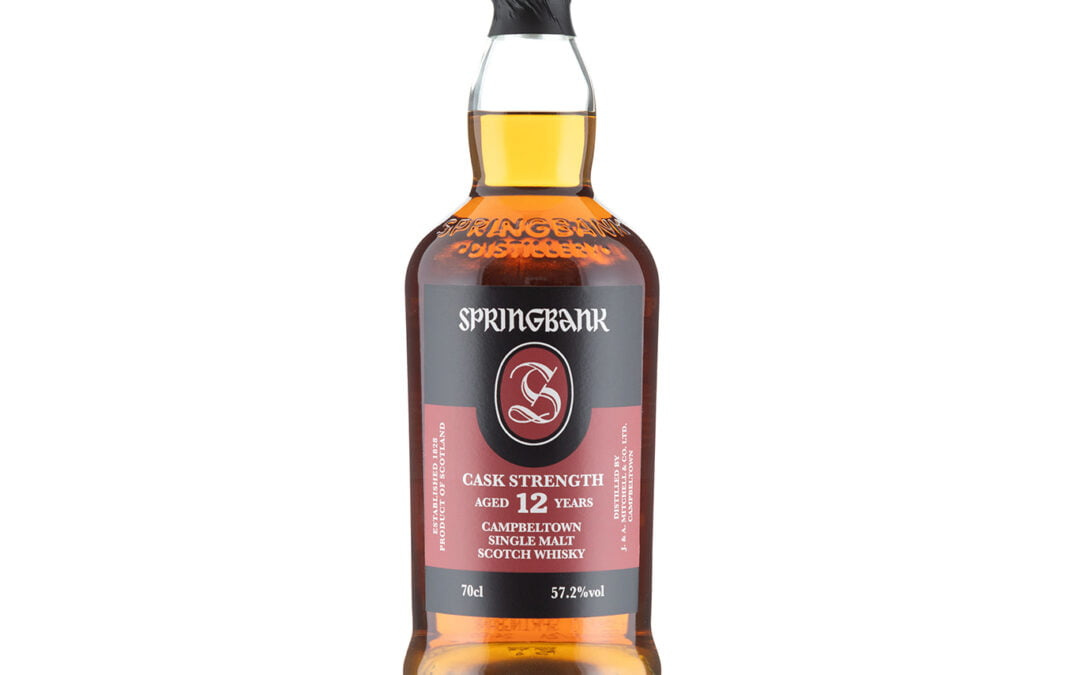
by HOS | Aug 25, 2025 | Springbank, Whisky
When whisky lovers talk about iconic drams, the name Springbank 12 Cask Strength almost always gets mentioned. It sparks curiosity and admiration alike. But why does this expression stand out? What makes it stand out among the countless other cask-strength releases on the market? Let’s explore the questions whisky lovers often ask, and uncover the answers that explain why this Campbeltown gem has become such a beloved favorite.
What exactly is Springbank 12 Cask Strength?
It is a small-batch single malt Scotch whisky produced by Springbank Distillery, located in Campbeltown, one of Scotland’s historic whisky regions. Unlike whiskies bottled at the standard 40–46% ABV, this expression is bottled at natural cask strength, often around 54–57%. That means it comes directly from the barrel with no dilution, offering whisky in its rawest and most intense form.
Why does cask strength matter?
The term “cask strength” isn’t just a marketing title or buzzword. It’s about experiencing whisky as close to its original state as possible. Bottling without dilution allows the spirit to retain its full power, complexity, and texture.
At cask strength, the whisky is completely concentrated and bold. But here’s the beauty: drinkers can choose how they enjoy it. Some prefer it neat for the unfiltered intensity. Others add a few drops of water to open up hidden layers of flavor. It’s customizable, interactive, and, most importantly, authentic.
What makes Springbank different from other distilleries?
Springbank holds a rare position in the whisky world because it is one of the few distilleries that controls every stage of production in-house. From floor malting the barley to distilling, maturing, and bottling, nothing is outsourced.
This level of craftsmanship is unusual today and ensures that Springbank whiskies, including the 12 Cask Strength, are unmistakably unique. They carry what enthusiasts often call the “Campbeltown character”, a briny, mineral, slightly funky quality that reflects both the region and the distillery’s traditional methods.
How does It taste?
While flavors vary slightly from batch to batch, the Springbank 12 Cask Strength is renowned for its depth and balance.
- On the nose, you often find sea salt, citrus, and vanilla, mingled with earthy peat smoke and rich malt.
- The palate delivers unforgettable richness with layers of dark chocolate, dried fruits, pepper, and oak. It is bold but never harsh.
- The finish lingers with spice, smoke, and a coastal tang, reminding you of its Campbeltown roots.
It’s the kind of whisky where you discover a newness with every sip. Add a splash of water, and entirely new notes, like honey, orchard fruits, or nuttiness, may reveal themselves.
Why do whisky collectors chase after this bottle?
Part of the allure lies in its limited nature. Springbank 12 Cask Strength is released in small batches, and each batch has slight variations depending on the casks used. Sometimes the emphasis leans toward sherry casks, bringing in richer, spicier flavors. Other times, bourbon casks dominate, highlighting fresher, citrus-driven notes.
For collectors, this means each release is a unique snapshot of Springbank’s artistry. Owning several batches is like owning different chapters of the same story.
Is it only for seasoned whisky drinkers?
Not necessarily. While the high ABV can be intimidating for beginners, the Springbank 12 is surprisingly approachable when treated with respect. Adding a bit of water not only softens the alcohol but also enhances the whisky’s complexity, making it accessible even to those new to cask-strength expressions.
In fact, trying Springbank 12 is an excellent way for newcomers to understand the difference between standard and cask-strength whiskies. It’s a hands-on lesson in flavor exploration.
How does it compare to whiskies from other regions?
Campbeltown whisky is distinct. Unlike Speyside whiskies, which often lean toward fruity sweetness, or Islay whiskies, dominated by heavy peat, Springbank occupies a fascinating middle ground. Its flavors are earthy and oily with just the right touch of smokey flavour.
This balance makes the 12 Cask Strength a standout. It’s neither overly sweet nor overwhelmingly smoky, it sits comfortably in between, offering complexity that appeals to a wide spectrum of whisky fans.
Can you pair it with food?
Absolutely. Its bold character makes it a natural companion to robust flavors. Think smoked salmon, rich cheeses, dark chocolate, or even barbecued meats. These pairings highlight its smoky, salty, and spicy qualities while balancing its richness.
Of course, many purists prefer to savor it alone, allowing the whisky’s layers to unfold slowly without distraction. But for those who enjoy whisky with meals, it offers exciting possibilities.
Why is it considered good value?
In today’s whisky market, many limited-edition cask-strength bottles come with inflated price tags. Springbank 12 Cask Strength, while not inexpensive, is often praised for offering exceptional quality at a fair price. Considering the craftsmanship, tradition, and intensity packed into every bottle, it consistently ranks as one of the best-value cask-strength whiskies available.
Final Question: Is it worth seeking out?
The answer is a resounding yes. The Springbank 12 Cask Strength is more than just another whisky, it’s an experience. It tells the story of one of Scotland’s most historic distilleries, reflects the unique identity of Campbeltown, and delivers a tasting journey that evolves with every sip.
Whether you’re a seasoned collector, an adventurous newcomer, or simply someone who appreciates authenticity, this bottle deserves a place on your shelf. It isn’t just whisky in a glass, it’s history, craft, and character bottled at its purest strength.

by HOS | Aug 18, 2025 | Blended Whisky, New Release, Specials
Some whiskies are made to be enjoyed casually, poured without thought, sipped without ceremony. And then there are whiskies like the Johnnie Walker 21 Year Old, bottles that ask you to slow down, to pause, and to appreciate everything happening in the glass. This isn’t just another evening pour; it’s an experience that reveals itself in layers, unfolding with patience and elegance.
The First Encounter
Opening a bottle of 21-year-old feels different. The weight of the packaging, the depth of the amber liquid, the quiet promise of two decades in cask, it sets a tone before the first sip even reaches your lips. Pour it, and the whisky sits heavy in the glass, gleaming gold with flashes of copper when it catches the light.
Bring it closer, and the aromas begin to rise. There’s no rush. You get dried fruits first, raisins, figs, and plums, mingling with hints of dark toffee and a trace of smoke that lingers like the memory of a fading fire. Spices follow, cinnamon and clove, weaving through the sweetness and oak. It’s the kind of nose you could spend five minutes with before even thinking about tasting.
On the Palate
The first sip is a moment worth paying attention to. The texture is smooth, almost creamy, with a richness that spreads across the tongue. Flavors come in waves: honeyed malt at the start, followed by roasted nuts, bitter chocolate, and citrus peel. The oak makes itself known but never dominates; it’s more of an elegant frame than an overpowering presence.
There’s a subtle smokiness throughout, not the assertive peat of some Scotch whiskies, but something softer, refined, like smoke drifting from well-seasoned wood. It adds depth without distraction. By the second sip, you begin to appreciate the balance, the way sweetness, spice, fruit, and smoke all find their place without one outshining the others.
The Finish
Long after the glass is lowered, the whisky continues to speak. The finish is warm, layered with spice and soft fruit, a touch of oak, and that gentle smoke again. It doesn’t fade quickly. Instead, it lingers like a conversation you’re reluctant to end, carrying enough complexity to keep you thinking about it long after the last drop.
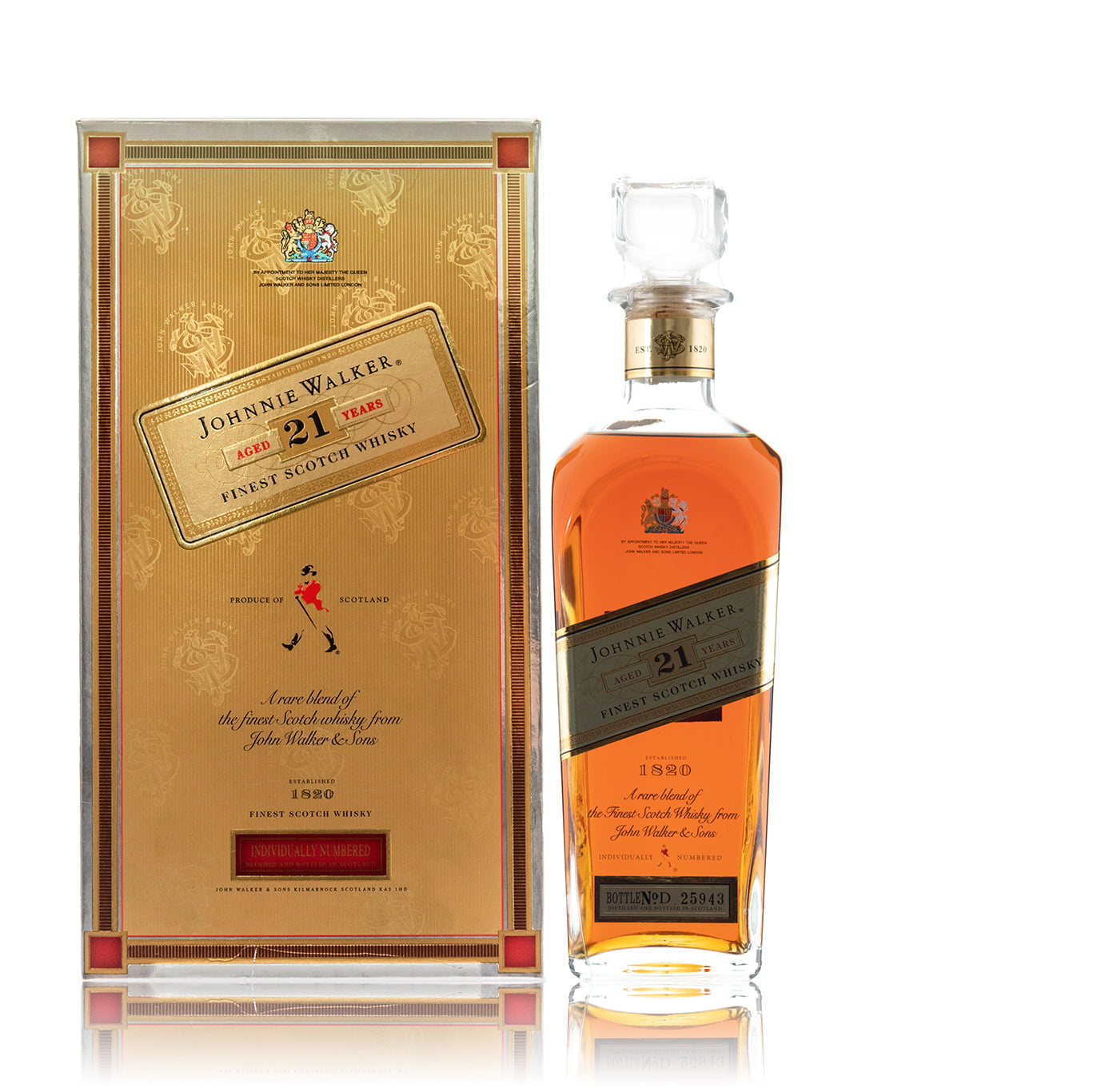
Why Age Matters Here
Age in whisky can sometimes be misleading. A younger expression can be vibrant, energetic, and full of life, while an older one may be softer, deeper, and more contemplative. With Johnnie Walker 21 Year Old, the years bring a maturity that shows in restraint as much as in intensity.
Twenty-one years in oak allows rough edges to melt away. The flavors knit together seamlessly. There’s no single note trying to dominate, no sharp bite to remind you of youth. It’s whisky that’s comfortable with itself, polished, assured, and quietly confident.
A Dram for Moments That Matter
This is not the kind of whisky you pour while distracted, scrolling your phone or rushing out the door. It demands attention, and in turn, rewards it. The 21 Year Old belongs to evenings where time feels abundant, celebrations with close friends, reflective nights alone, or moments when a milestone deserves something worthy of the occasion.
It works equally well in solitude and in company. Alone, you can savor every nuance, letting the flavors play out at their own pace. Shared, it becomes part of a ritual, passing the glass, exchanging impressions, and enjoying the quiet reverence that a whisky of this caliber naturally commands.
Comparisons and Perspective
In the Johnnie Walker family, expressions like the 12 or 18 Year Olds are approachable, versatile, and suited for frequent enjoyment. The 21 sits differently, it’s not about accessibility, but about presence. It’s richer than the 18, more layered, and while it doesn’t carry the cult status of Blue Label, it offers its own kind of sophistication, less showy, more contemplative.
It’s the bottle that quietly outperforms expectations, the one you keep for moments when you want depth over flash, maturity over noise.
How to Enjoy It
There are no strict rules, but there are good practices. Pour it neat, give it a moment in the glass, and let the air do its work. A splash of water, if you prefer, will open up subtler notes of citrus and spice. Ice can be used sparingly, just enough to chill without stripping away the character.
The important part is to take your time. This is a whisky shaped by years, and it reveals itself best when you’re willing to match its pace.
Final Thoughts
The Johnnie Walker 21 Year Old is not a whisky for hurried moments or casual sipping. It’s a whisky that embodies patience, patience in its creation and patience in its enjoyment. Every pour carries the weight of two decades, and every sip is a reminder that some things cannot be rushed.
For those who love whisky that is layered, balanced, and quietly powerful, this bottle delivers. It’s not loud or ostentatious. Instead, it speaks with calm authority, offering richness and depth to anyone willing to listen.
In a world that often celebrates speed and immediacy, Johnnie Walker 21 Year Old is a reminder of the beauty of time, time well spent, time well aged, and time well enjoyed.










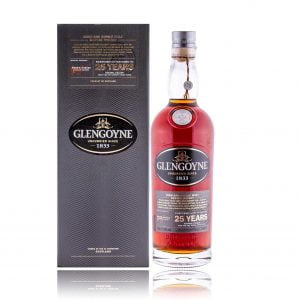


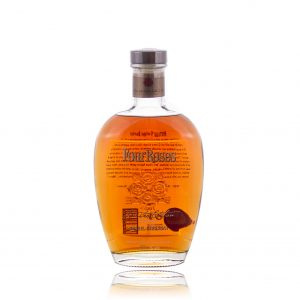









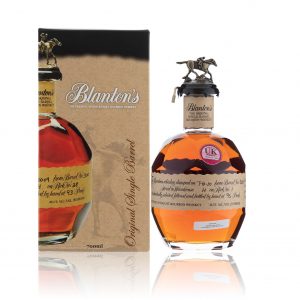
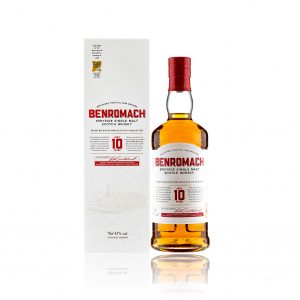
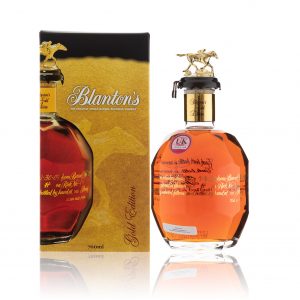
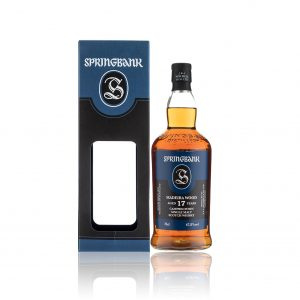





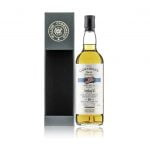


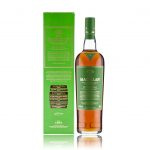





Recent Comments